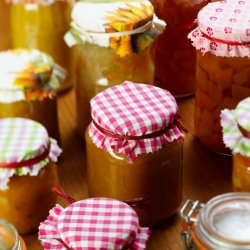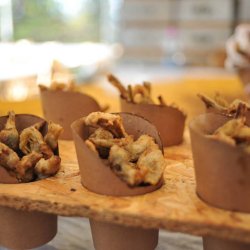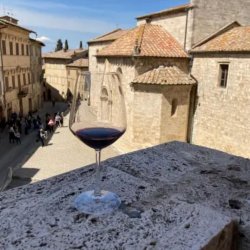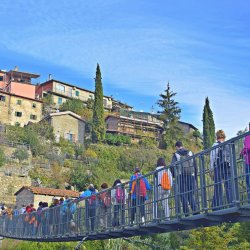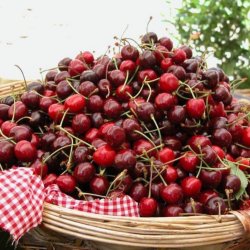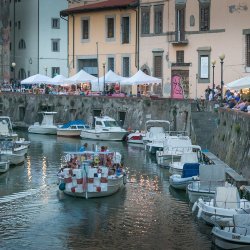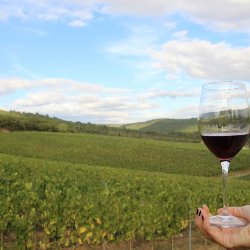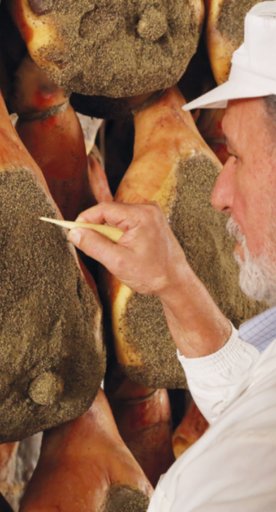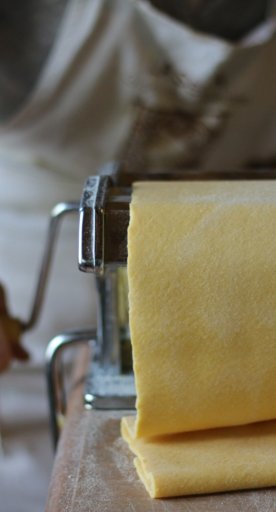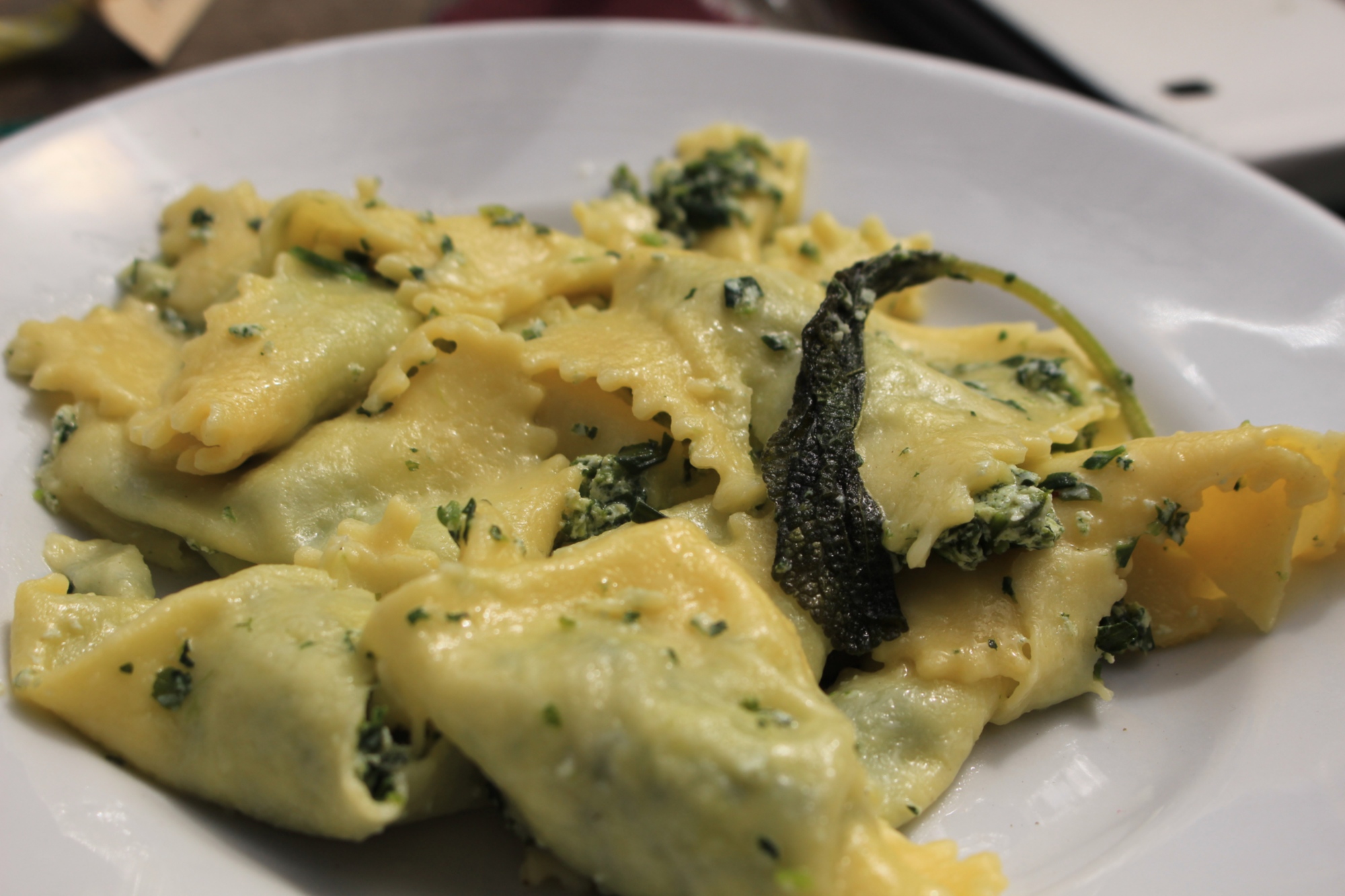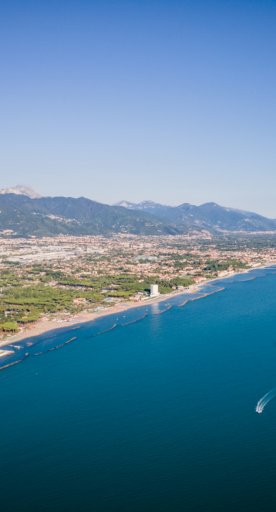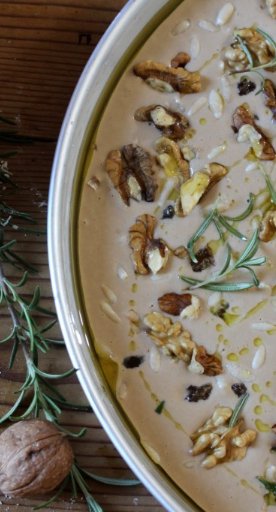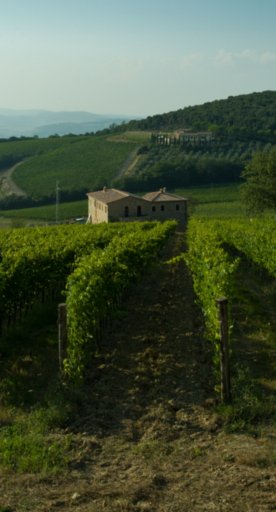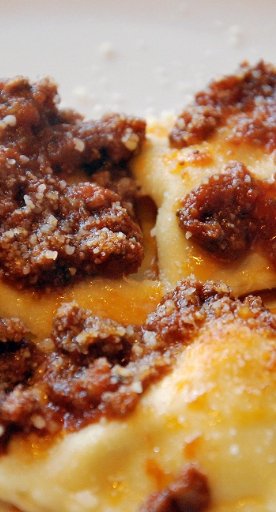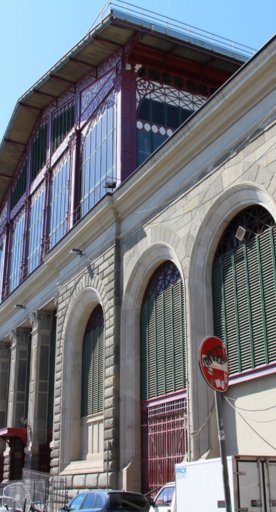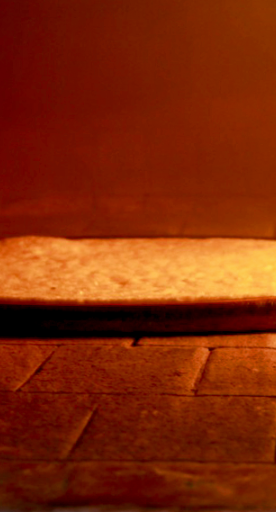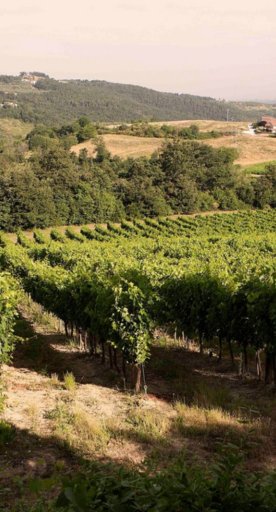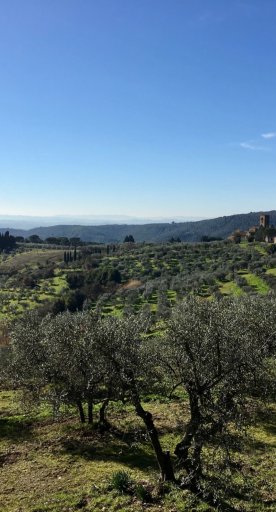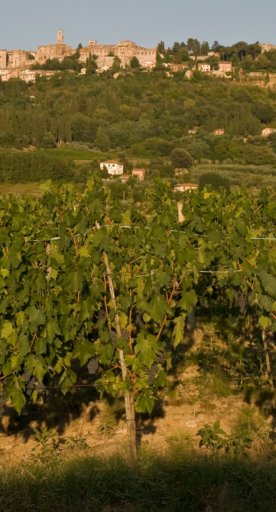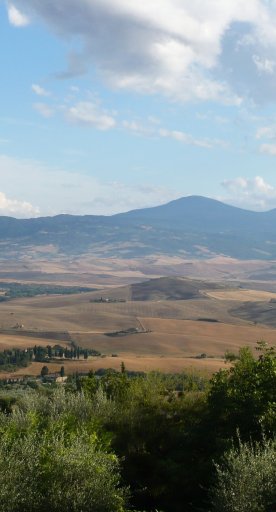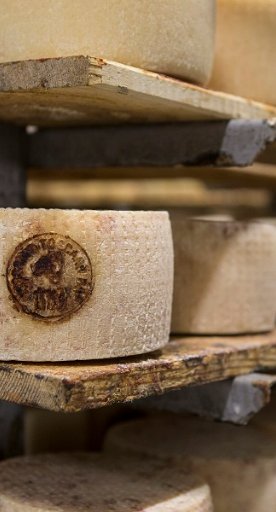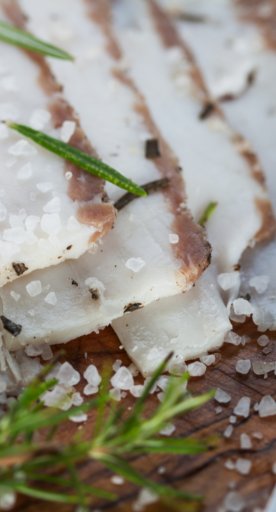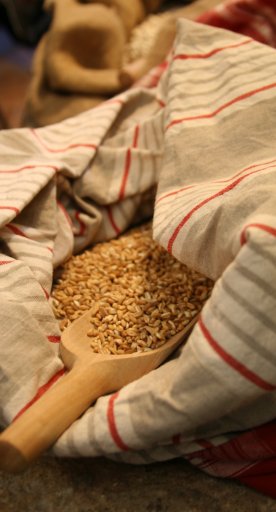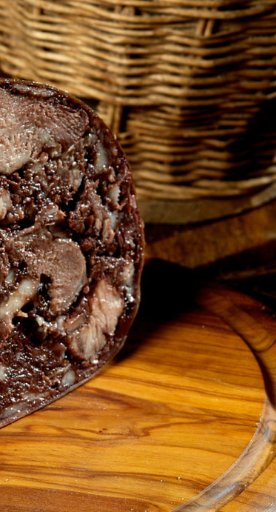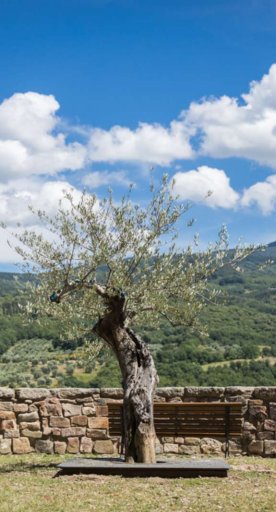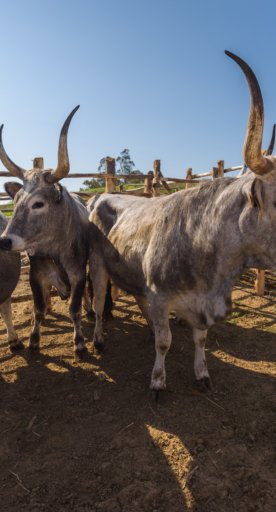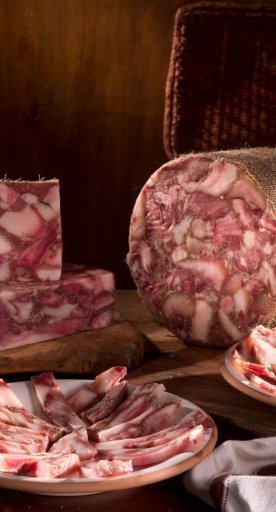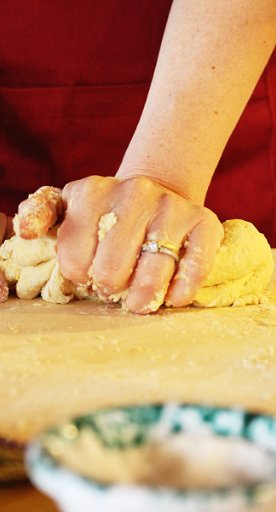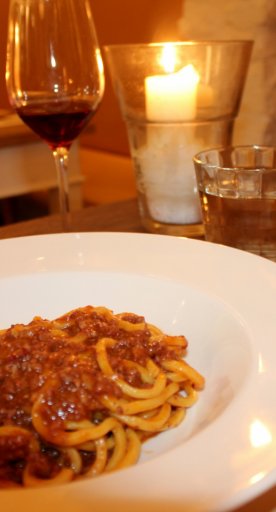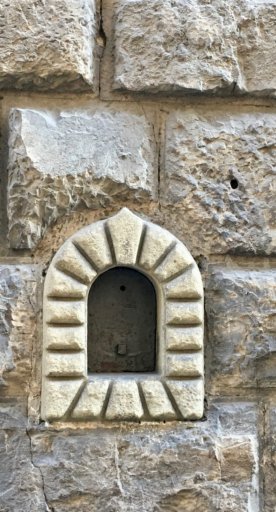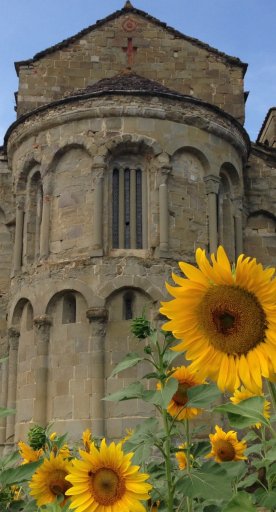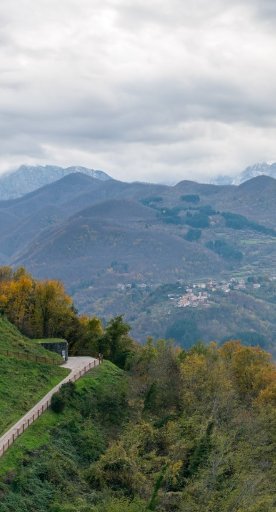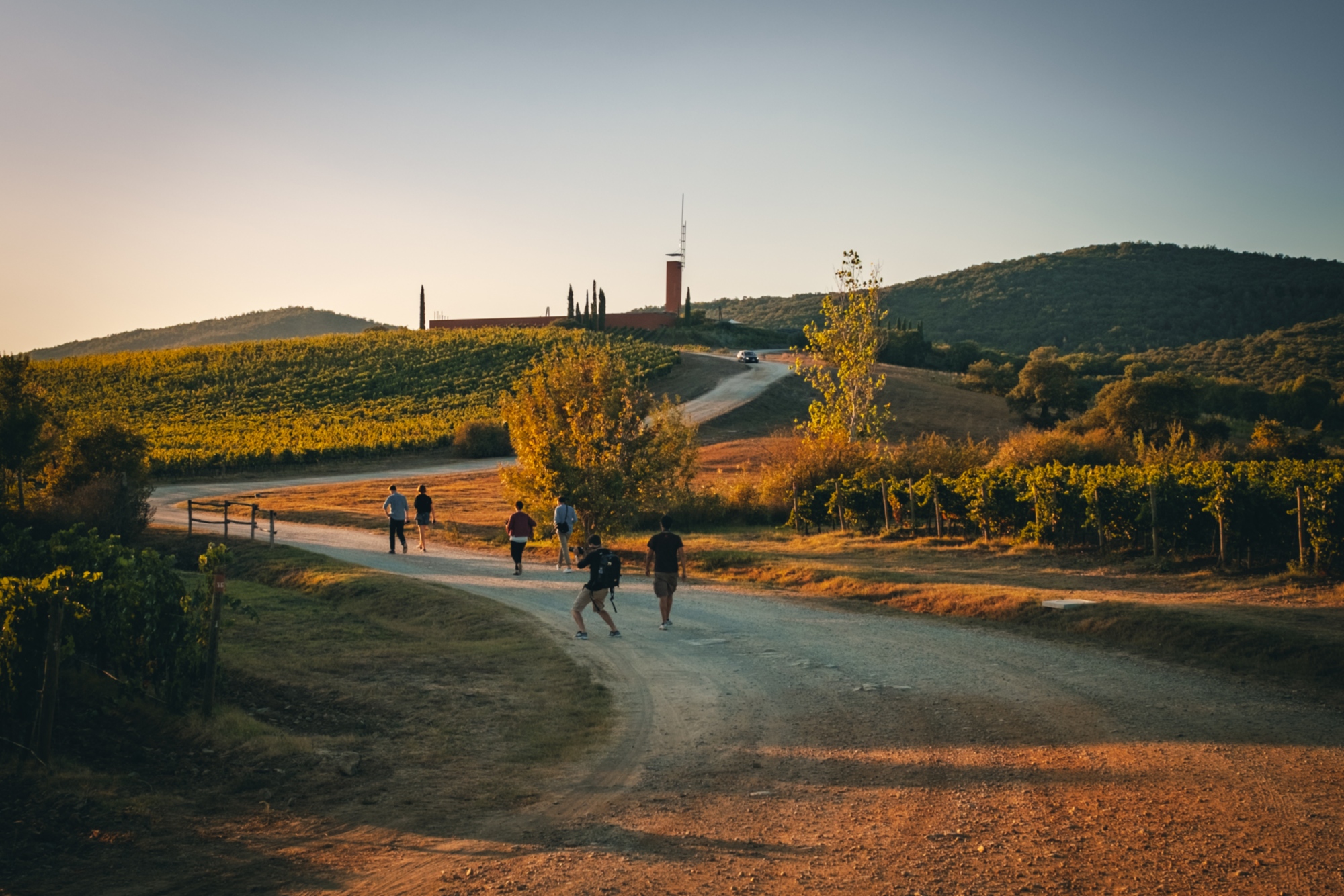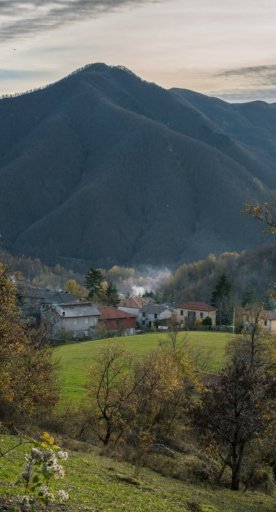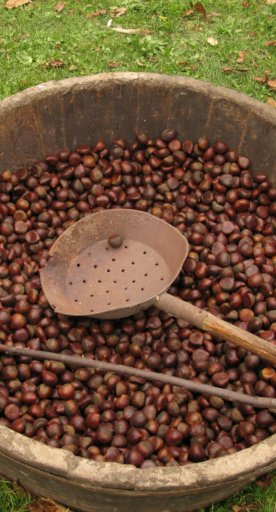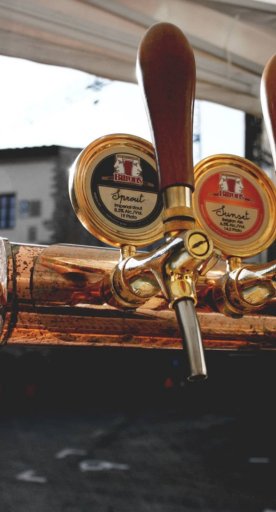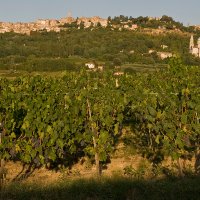
Old flavours and traditions: Testo della Lunigiana
An original and ancient cooking method, still used today to make pancakes from Pontremoli, known as “testaroli pontremolesi”, and other specialities
In Lunigiana, a borderland between Tuscany, Liguria and Emilia Romagna, the flavours and traditions of the surrounding areas have blended together. In the valleys and stone-clad towns, you can still savour traditional foods made using age-old techniques. The most charming and famous of these is the "al testo" cooking style.
-
1.What’s a “testo?
-
2.Traditional testarolo from Lunigiana
-
3.Herb quiche, lamb from Zeri and other specialities...
What’s a “testo?
A “testo” is an old piece of cooking equipment used in the Lunigiana, made in cast iron and in earthenware in the past. It’s a sort of pot consisting of two parts: the lower part is called the sottano, while the upper part, the cone-shaped lid, is the soprano. The outer diameter varies between approximately 40 and 50 cm. The size and the material with which it’s made make it a very heavy utensil to use. In order to cook “al testo”, you usually need a designated area, called a “cucina nera” (“black kitchen”); this cooking style, which occurs over an open fire, usually takes place in a different outdoor space to the kitchen, where the fire and embers can be prepared. Here the testo, after having been heated red-hot over the fire, were placed on andirons to keep them raised above the fire and embers. During the preparations, the soprano is covered in embers and ashes so that its temperature remains constant. The cooking area, the part known as the “cucina near”, was often set up in stone shelters and drying rooms, where the embers and fire were kept constantly in flame to dry the chestnuts following the harvest, and the smoke coated all the surfaces.
Traditional testarolo from Lunigiana
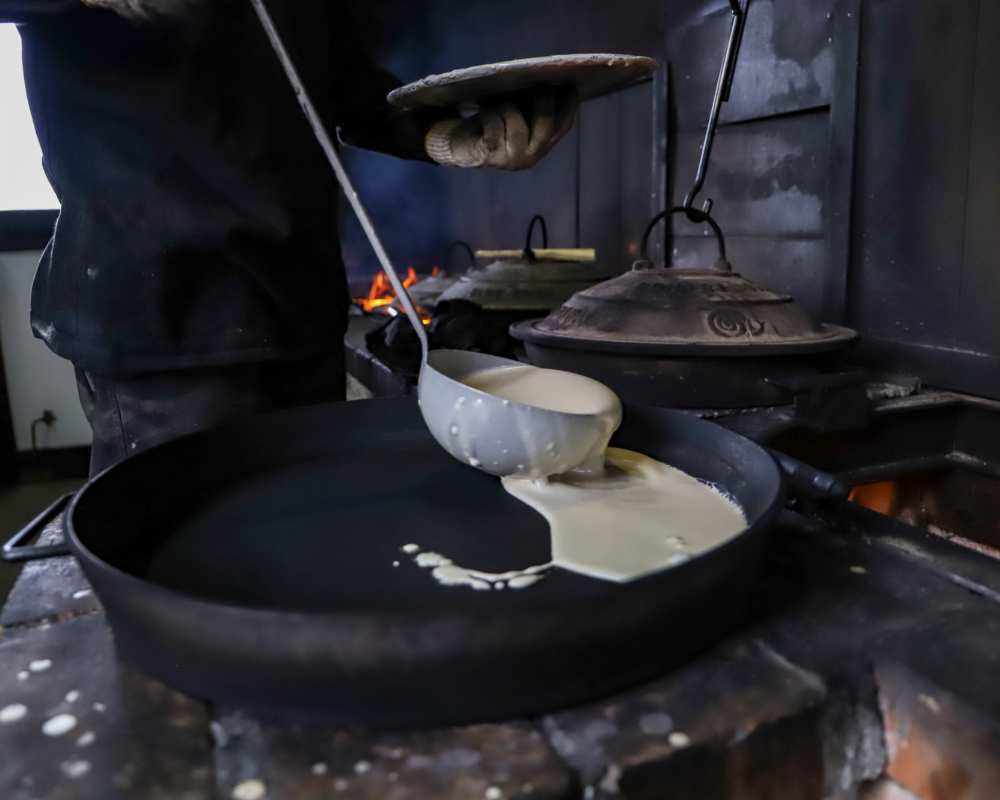
The best-known product is certainly the traditional Lunigiana testarolo, a Slow Food speciality. It’s also the simplest: the only necessary ingredients are wheat flour, water and salt. Once the rather liquid dough has been prepared, it is poured on the sottano and initially left to cook uncovered. After a few moments, the testo is covered with the soprano. As soon as it has cooked, the testarolo is cut into diamond shapes and cooked again in boiling water, with the heat off, for a few minutes. At this point, it can be seasoned to your liking. Traditionally, it was served with oil and grated cheese. It is also wonderful with basil pesto or even with mushroom-based sauces.
Herb quiche, lamb from Zeri and other specialities...
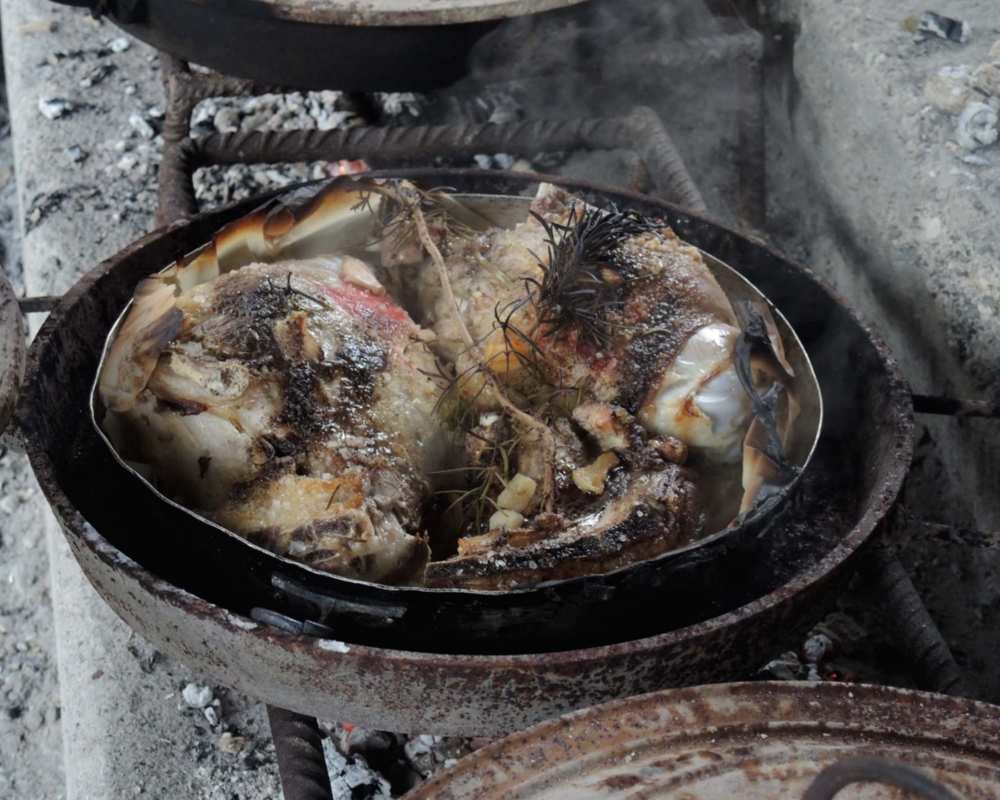
The testo was also used to make other recipes such as the traditional Lunigiana herb cake, typical of the upper Val di Magra. There’s no specific recipe: each family prepares their own version. If you use field herbs, the flavour changes with the season. The herbs, or chard, are cut, washed and salted while raw, then well squeezed and seasoned with oil and cheese. This mixture is placed between two layers of puff pastry, very simply prepared and rolled out thinly with water, oil, wheat flour and salt. At this point, the tart is cooked in the testo. Today, it is laid out in a pan and then placed in the testo. At one time, however, it was placed directly on the cast iron and, so that the dough did not stick to the bottom, a special and environmentally-friendly “baking paper” was used: large chestnut leaves!
While testarolo and the herb quiche are two simple dishes, there’s no shortage of more complicated recipes made using the testo, such as the so-called meat “al testo”. The meat, already portioned, is placed on a tray with potatoes and cooked in the testo with oil (or lard), garlic, parsley, sage and rosemary. This type of cooking makes the surface crispy, as happens in the oven, but keeps the interior very soft and flavourful due to the steam. One of the most delicious meats is Zeri lamb, another Slow Food speciality: a native sheep breed, which over time has maintained its characteristics thanks to the isolation of this area of Lunigiana.
Other recipes can be made using Lunigiana testi. In addition to bread, we can also prepare focaccia and pizza that become crunchy on the outside and soft on the inside.

